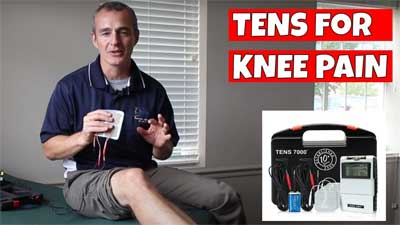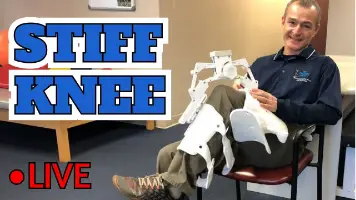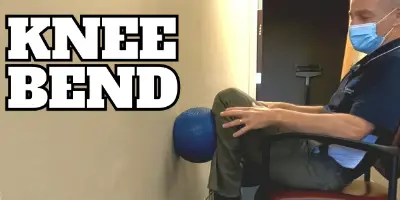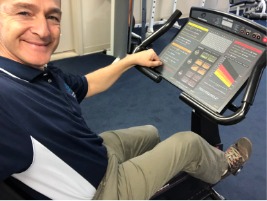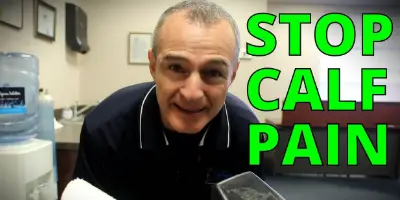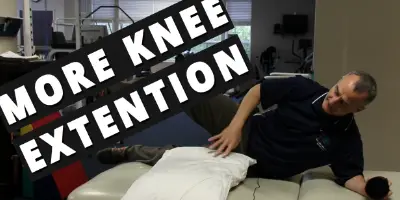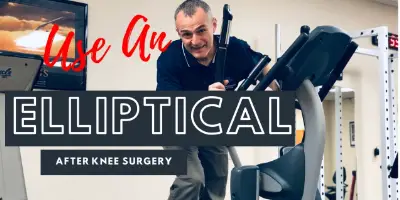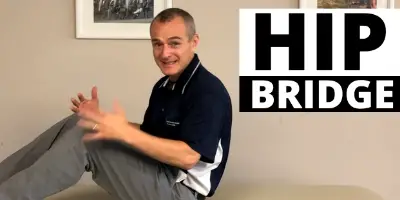Total Knee Replacement Pre Surgery Online Class
This total knee replacement class is 100% online, and totally FREE. In this three part class you will learn what to do 6-weeks before your surgery, the day of surgery, and 12-weeks after surgery.
* Class Dates To Be Announced
FREE Online Knee Replacement Pre-Surgical Class
In this video I share the first part of a three part class on preparing for your knee replacement surgery.
This portion of the class discusses pre-surgical considerations.
Watch time is 17:12 minutes.
What should I be doing 6-weeks before my knee replacement surgery?
There is lots to do before surgery. In this video you will hear some of the often forgotten parts of the pre-surgical plan.
What should I be doing the day of my knee replacement surgery?
The day of knee surgery you will need to follow you surgical teams recommendations.
Recommendations will vary slightly but be sure to utilize checklists to reduce the chances of forgetting any instructions.
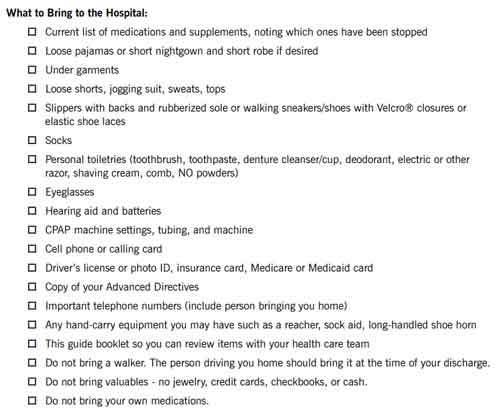
What can I expect during the first 12 weeks after surgery?
Immediately after surgery a physical therapist will help you stand and walk around your recovery room.
If surgery was performed in an outpatient surgery center you will return home the same day. Some patients will stay in the hospital for a short stay or transitioned to a skilled nursing facility if it is not safe to return home.
Therapy will begin the day of surgery and continue for an average of 6 to 12 weeks.
Most patients in the US will us a walker for the first few days then transition to a cane before walking independently without an assistive device.
Physical therapy may start in the home or skilled nursing facility before transitioning to an outpatient clinic or having a mobile therapist perform outpatient therapy in the patient's home.
Checklists
What to Bring to the Hospital on the Day of Your Knee Replacement:
Current list of medications and supplements, noting which ones have been stopped
Loose pajamas or short nightgown and short robe if desired
Under garments
Loose shorts, jogging suit, sweats, tops
Slippers with backs and rubberized sole or walking sneakers/shoes with Velcro® closures or elastic shoe laces
Socks
Personal toiletries (toothbrush, toothpaste, denture cleanser/cup, deodorant, electric or other razor, shaving cream, comb, NO powders)
Eyeglasses
Hearing aid and batteries
CPAP machine settings, tubing, and machine
Cell phone or calling card
Driver’s license or photo ID, insurance card, Medicare or Medicaid card
Copy of your Advanced Directives
Important telephone numbers (include person bringing you home)
Any hand-carry equipment you may have such as a reacher, sock aid, long-handled shoe horn
This guide booklet so you can review items with your health care team
Do not bring a walker. The person driving you home should bring it at the time of your discharge.
Do not bring valuables - no jewelry, credit cards, checkbooks, or cash.
Do not bring your own medications.
To improve my health before surgery:
I quit smoking to improve healing and reduce the risk of infection after surgery.
I had a dental check-up to make sure all my dental needs are taken care of before surgery.
I received a flu vaccination (if during flu season -- October through March).
I am eating lightly the week before my surgery to help reduce the risk of constipation.
I have increased fluids and fiber in my diet as well.
I had my diabetes checked, and it is under control (if applicable).
Things to do before surgery:
I have verified with my insurance company that I have coverage for my surgery.
I have attended the total joint replacement education class.
I have received my pre-admission testing schedule. If I have not received my schedule with in two weeks before my surgery, I will contact the surgery scheduling office.
I have completed all lab work requested from my surgeon’s office.
I will call my Specialty Care Coordinator if I have questions or concerns about my surgery.
I have talked to my Specialty Care Coordinator or surgeon about discharge options.
I have completed a Living Will or Health Care Power-of-Attorney to have on file in my chart.
I have not shaved my legs 3 days before my surgery.
I have arranged for someone to drive me home when I’m discharged from the hospital.
I have arranged for someone to drive me to my follow-up appointments.
More Blog Posts ...
Can you use a TENS unit after knee replacement?
A TENS unit is safe to use after a total knee replacement. It is commonly used during knee flexion and extension exercises. Using TENS to reduce pain during knee replacement exercises may improve range of motion without the need for more medication.
How To Stretch A Stiff Knee After Knee Replacement
Stretching a stiff knee at home requires patience and time. Research suggests a long duration low intensity stretch will produce the greatest benefits in knee range of motion. In this post I will discuss using a Joint Active Systems and static progressive stretch technique to improve knee flexion at home.
Knee Replacement Bending Flexion Exercises at Home
Knee bend, also known as knee flexion, exercises may be performed immediately following knee replacement surgery. This videos shows several examples of knee flexion exercises to be performed at home. 120 degrees of knee flexion is considered normal range of motion following surgery.
Can I Run After Knee Replacement
Conventional advice is to avoid high impact activities after a total knee replacement. This would include running, jogging, and other high impact sports. The concern is the increased wear and tear on the new knee will cause it to wear out sooner or possibly even...
How soon after knee replacement can I use exercise bike?
It is commonly recommended to start using an exercise bike within the first 48-hours following a knee replacement. Standard practice in physical therapy is to begin the bike with a gentle rocking motion until the knee is capable of a completing full rotation without significant pain.
Calf Pain After Knee Replacement
Calf pain can happen for many reasons, but after surgery the most common reason is weakness, swelling, and change in activity levels. These exercises will help improve calf mobility, increase strength, and condition the calf to handle the workload associated with normal walking.
Please check with your physical therapist or doctor before performing these exercises.
Minimalist Running Shoe Review Unboxing Merrell Men’s Trail Glove 4 Runner
The Merrell Men’s Trail Glove 4 Runner has been a great show. I am updating this description today January 1, 2020. I have worn the shoe for work in the clinic as a physical therapist as well as the occasional run. It is ideal for a medium or narrow foot. I absolutely would not recommend it for a wide foot or a foot that will swell over the day.
Best Tip To Improve Knee Extension- Prone Hangs
Improve knee extension with this simple and effective exercise! Total knee replacement | ACL reconstruction | Knee Surgery
Using an Elliptical Trainer After Total Knee Replacement Surgery
Using and choosing an elliptical trainer after total knee replacement surgery or any other knee surgery can be challenging. There are so many different brands available on the market. In this video I will show you how to safely get on, off, and use the elliptical trainer whether you are using one at home, at the gym, or in your physical therapy clinic.
3 Versions of a Hip Bridge for Total Knee Replacement Therapy At Home
The hip bridge is a very common exercise following total knee replacement, but doing it correctly isn’t as common. There are three version of the hip bridge and in this video I share information about all three.
